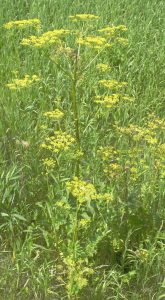This Week: June 4, 2021
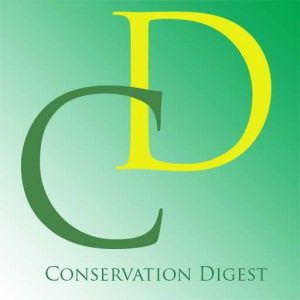 Round-up of weekly news for Wisconsin landowners
Round-up of weekly news for Wisconsin landowners
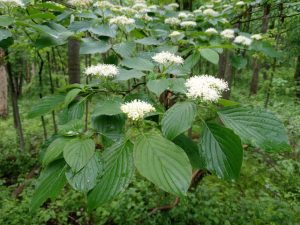
Native Plant: Alternate Leaf Dogwood
One of the joys of spring in Wisconsin woodlands is seeing the brilliant white blossoms of the alternate leaf dogwood. Also known as pagoda dogwood because its layered branches resemble the form of an oriental pagoda, this small Wisconsin woodland adds interest to the forest mid-story. It is also a great source of spring nectar for pollinators and its berries are favorite wildlife food for birds and bear alike.
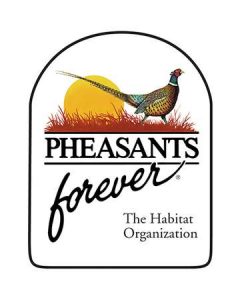
Saturday, June 12th: Bridging The Gap For Butterflies
The day long event will be held in Marquette County where over 80 acres of land have been restored to benefit the Karner Blue Butterfly through assistance from U.S. Fish and Wildlife Service and the Tomorrow River Chapter of Pheasants Forever. Tickets for this event help support the work of PF and its efforts to protect Karner blue butterflies in central Wisconsin.
Now is a Good Time to Control Wild Parsnip
It was a couple years ago I was at the studio and I heard Gordy talking with Rice County Highway Engineer Dennis Luebbe on KDHL’s AM Minnesota. Dennis mentioned that a number of his staff had gotten severe burns from wild parsnip. I had never heard of wild parsnip. If you touch wild parsnip and some of the oil gets on your skin it reacts with sunlight causing a severe burn. It can even be a first degree burn with scaring.
[editors note: glyphosate may be a better choice for spot spraying wild parsnip as it does its job quickly and then breaks down in the soil. Always follow label directions.]
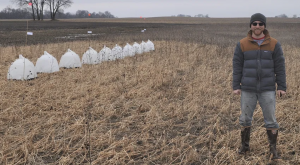
Field Borders Provide Winter Refuge for Beneficial Predators and Parasitoids
Entomology Today
By Paige Embry
Plants are always at risk of untimely damage and death, often due to the weather—a late frost, too much rain, too little rain, excessive wind—but various living organisms can also cause devastation. For gardeners, damaged plants are maddening, but, for farmers, preventing or limiting that damage is necessary for maintaining their livelihood.
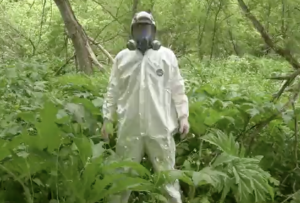
Avoid at all costs: What makes giant hogweed so dangerous
The Weather Network
Mark Robinson
If you live or own property in far northern Wisconsin, keep an eye out for giant hogweed. The sap causes serious chemical burns. This Canadian article does a very good job of spelling out the problems posed by this invasive plant.
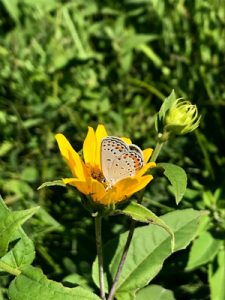
Karner Blue Butterfly Monitoring Kicks Off 2021 Season
The Wisconsin DNR is now offering the training for its Karner blue butterfly monitoring program online. You can access the trainings on the Karner Volunteer Website. Find all training videos and instructions under the “How can you get involved?” tab. The two part training video reviews Karner biology and identification as well as how to survey and submit data via iNaturalist. It’s a good option for new volunteers as well as a nice refresher for seasoned volunteers.
They will also conduct a virtual field day via Zoom on June 11th at 1pm. Contact Chelsea Weinzinger if you’re interested in the virtual field day so she can send the Zoom link via email.
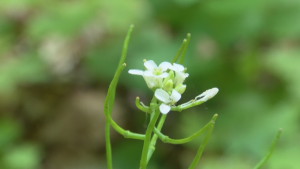
Combating garlic mustard in the Northwoods
Story By Meghan Mamlock
WJFW Local News Published 06/02/2021 6:01PM, Last Updated 06/02/2021 6:54PM
Eagle River – According to the Nature Conservancy garlic mustard “was introduced to North America in the 1800s for herbal and medicinal qualities and as erosion control.”Chequamegon Nicolet National Forest District Ranger Chad Kirschbaum has been assisting locals with mapping out the major clusters of the invasive plant.
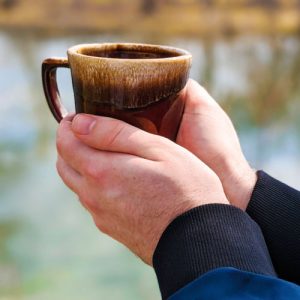
Coffeebreak: Ears in the Driftless – BioAcoustic monitoring in a restored wetland
BioAcoustics is a cross-disciplinary combination of acoustics and ecology. Learn how landowners Mike and Marcie O’Connor are using this technique to document habitat changes over the course of restoring wetlands on their land, Prairie Haven, in Wisconsin’s Driftless Area.
Wisconsin Degree Days
Many plants sprout and flower based on how warm it has been. Check out this chart from the Wisconsin DATCP to see how your neck of the woods compares with average temperatures so far this year.

